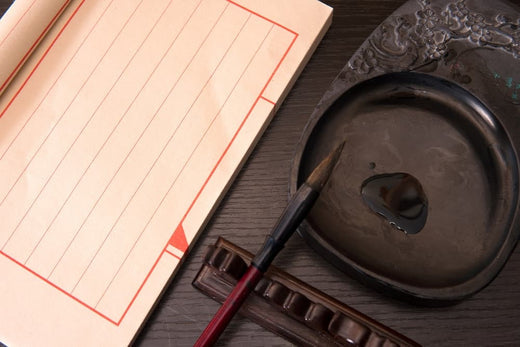In Chinese calligraphy and painting, there are few tools as revered and essential as the Chinese inkstone. These unassuming yet intricate pieces are more than just functional; they are works of art in their own right. To truly appreciate their significance, we must embark on a journey through the intricate craftsmanship that transforms raw materials into exquisite tools for artistic expression.
Quarrying the Raw Materials
The journey of a Chinese inkstone begins deep within the earth. The raw materials for these remarkable pieces are typically sourced from specific quarries known for their unique stone formations. Two of the most celebrated quarries are the Duan and She quarries in China.
- Duan Quarry: Located in Guangdong province, the Duan quarry is renowned for its fine-grained stone with delicate patterns. These stones range in colour from pale white to deep grey, and they are highly prized for their ability to produce ink with a wide range of tones. Quarrying the perfect Duan stone requires skilled labourers who can extract these precious rocks with care and precision.
- She Quarry: Nestled in Zhejiang province, the She quarry yields stones that are celebrated for their deep black hues and natural luster. These stones are known for their durability and the rich, dark ink tones they produce. Quarrying She stones requires expertise and the ability to select the finest raw materials.
Shaping and Carving
Once the raw stones are extracted, the transformation into an inkstone begins. Skilled artisans painstakingly shape and carve the stones into various forms. The most common shapes are rectangular and circular, but you can find a wide array of artistic designs and shapes that cater to different tastes.
Polishing and Finishing
After the initial shaping and carving, the inkstones undergo a meticulous polishing process. This stage is crucial in bringing out the stone's natural beauty and enhancing its texture. The polishing is typically done by hand, and it requires immense skill and patience. The process can take days or even weeks to complete, depending on the desired level of smoothness and lustre.
The Artistic Touch
Many Chinese inkstones are not just utilitarian tools but pieces of art with intricate carvings, inscriptions, and designs. These artistic embellishments add to the aesthetic appeal of the inkstone and make each piece unique. Some inkstones feature traditional Chinese motifs, while others may showcase poems, calligraphy, or intricate patterns.
Appreciating the Craftsmanship
The craftsmanship involved in creating Chinese inkstones is a testament to the rich history and cultural significance of these tools. They are not merely functional; they are embodiments of tradition, artistry, and patience. The process, from quarry to work of art, is a labour of love, requiring a deep understanding of the stone, skill, and a passion for preserving the essence of Chinese calligraphy and painting.
Chinese inkstones are more than just tools; they are a bridge between art and nature, a testament to human creativity and the enduring tradition of Chinese culture. The next time you admire a beautifully crafted inkstone while creating your calligraphy or painting, take a moment to appreciate the craftsmanship and artistry that went into its creation. Each inkstone is a work of art in its own right, a masterpiece that enhances the beauty of traditional Chinese art forms.
Related Content:
The Art of Chinese Inkstones: A Timeless Tradition
Choosing the Perfect Chinese Inkstone: A Buyer's Guide

